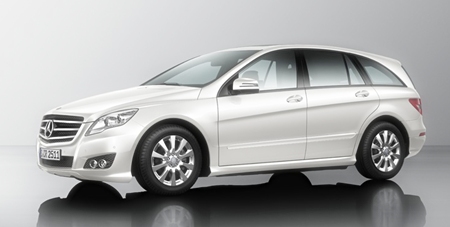The automotive world has returned to the small capacity engines of over a century ago. The large capacity, fuel gulping behemoths have had their day. The dinosaurs are dead.
The major auto manufacturers have finally discovered that the majority of drivers are commuters. City cars are the go. Look at the new car sales in Thailand – where once the three liter pick-ups were the chosen mode of transport, now the balance is going towards the smaller, cheaper to run, small cars. Look at the success Nissan has been having with the Nissan March. They can’t make enough of them.
 Mercedes-Benz B Class
Mercedes-Benz B Class
However, even the luxury brands have found that the car buying public has an eye towards the price and the economy. BMW, for example, is set to launch several new city-friendly models over the next three years with a core focus on reducing fuel use; in the case of electric models such as the upcoming i-Series electric city car there won’t be any fuel used and, therefore, zero carbon dioxide emissions.
This new all-electric i-Series is expected to retain the BMW badge despite being a brand in its own right, which will be led by the city-sized i3 hatchback. This is in contrast to BMW’s model line-up which has traditionally been upper level luxury for the past 30 years. As with arch rival Mercedes-Benz, BMW’s luxury reputation has been largely build on larger limousines or the M-Series performance cars.
Like other luxury makers – Mercedes-Benz has the A- and B-Class and Audi the A1 and A3 – it’s a necessary move to ensure sales keep growing, as the upper luxury end of the market has shown shrinking sales for the past few years.
This slowing down has not just been with the German automakers, as Jaguar’s XJ has also seen sales plummet despite the arrival of an all new model for which it is claimed, “establishes a new benchmark for its class”.
BMW spokeswoman Michelle Lang says the brand was aware of the shift towards smaller premium cars years ago, and the success of its 1-Series range is testament to that urge to downsize.
“BMW identified the trend for smaller vehicles many years ago, hence the introduction of the successful 1-Series range,” Lang says. “The 1-Series customer comprises 80 percent conquest business – people who have never bought a BMW before – plus 80 percent of those conquest customers have never bought a premium vehicle before.”
Lang says the premium small car segment offers buyers economy and efficiency, but not at the expense of technology or luxury.
BMW’s Mini brand will evolve to offer several additional models, including the sleek-roofed Coupe and a new Roadster convertible version set to follow later down the track.
Other future models for Mini are likely to include a new smaller hatch (likely to arrive in 2014) and a new two-door variant of its Countryman SUV (likely to arrive by 2013).
BMW denies it is a challenge for a retro-inspired brand such as Mini to sustain buyer interest, instead suggesting that rivals such as Audi’s recently introduced A1 city car face a more difficult challenge.
However, forgetting inter-manufacturer rivalry, the trend is inexorably towards the smaller city car.
The dinosaur is dead.




